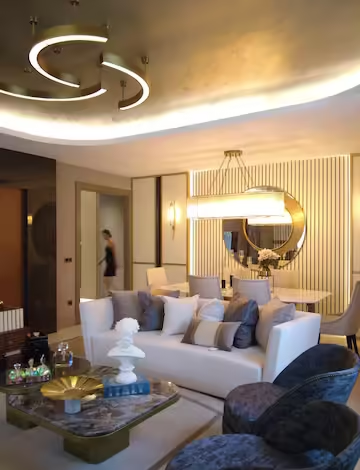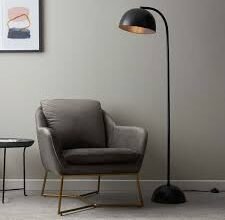Illuminate Your Home Decor with LED Lights

In recent years, LED lighting has revolutionized home decoration, offering both aesthetic appeal and practical benefits. For those looking to enhance their living spaces, understanding the versatility and utility of LED lights is essential.
Introduction to LED Lighting in Home Decor
LED lights are no longer just functional fixtures for illuminating your home. They’ve become a critical element in interior design, providing endless possibilities to transform any space. Unlike traditional lighting, LEDs offer a spectrum of colors and intensities, allowing you to create unique atmospheres tailored to each room. Whether you aim to highlight architectural features, create a cozy ambiance, or simply save energy, LED lighting can meet your needs.
The Benefits of Using LED Lights
Energy Efficiency
One of the most significant advantages of LED lights is their energy efficiency. LEDs consume up to 80% less energy than traditional incandescent bulbs, translating into substantial savings on your energy bills. This efficiency also makes them an environmentally friendly option, reducing your carbon footprint.
Longevity
LED bulbs have an impressive lifespan, often lasting up to 25,000 hours or more. This durability means fewer replacements and less waste, adding another eco-friendly tick to their list of benefits. Their long life also ensures that you enjoy a consistently illuminated home without the frequent hassle of changing bulbs.
Versatility and Design Flexibility
LED lights come in various shapes, sizes, and colors, offering unmatched flexibility in home decor. From sleek ceiling lights to whimsical fairy lights, the design options are limitless. LEDs can be seamlessly integrated into furniture, walls, and even floors, providing creative ways to enhance your living space.
How to Incorporate LED Lights Into Different Rooms
Living Room
The living room is often the heart of the home, and LED lighting can enhance its comfort and style. Consider using LED strip lights along bookshelves or under furniture to create a soft, inviting glow. Accent lighting can highlight artwork or architectural features, adding depth and dimension to the room.
Kitchen
In the kitchen, functionality meets style with LED lighting. Use under-cabinet LED strips to illuminate countertops, making meal preparation safer and more enjoyable. Pendant lights with LED bulbs can add a modern touch, while recessed ceiling lights ensure even illumination throughout the space.
Bedroom
Create a relaxing sanctuary in your bedroom with LED lights. Dimmable LED bulbs allow you to adjust the lighting to suit different moods and activities. Warm white LEDs can create a cozy atmosphere, while color-changing options offer fun and flexibility for personalizing your space.
Bathroom
LED lights are ideal for bathrooms due to their energy efficiency and bright, clear light. Vanity mirrors with built-in LEDs provide excellent lighting for grooming tasks. Waterproof LED strips can also be installed around the edges of bathtubs or showers, adding a luxurious spa-like feel.
Tips for Choosing the Right LED Lights for Your Home
Consider Color Temperature
The color temperature of LED lights affects the ambiance of a room. Measured in Kelvins (K), lower temperatures (2700K-3000K) emit a warm, yellowish light, suitable for cozy spaces like bedrooms and living rooms. Higher temperatures (4000K-5000K) produce a cool, bluish light, ideal for task-oriented areas like kitchens and offices.
Assess Brightness
Brightness is measured in lumens, with higher lumens indicating brighter light. Choose LED bulbs with appropriate lumens for each room’s function. For example, a living room may require bulbs with 800-1200 lumens, while a reading nook might need higher brightness for optimal visibility.
Check Compatibility
Ensure that your chosen LED bulbs are compatible with existing fixtures and dimmer switches. Some LEDs may require specific dimmers to function correctly, so it’s essential to check compatibility to avoid flickering or reduced bulb life.
Case Studies of Successful LED Decor Installations
Modern Minimalist Apartment
In a sleek, minimalist apartment, LED strip lights were installed under floating shelves and along the baseboards. This subtle lighting added a sense of depth and sophistication without overwhelming the clean, simple lines of the decor. The result was a modern space that felt both stylish and inviting.
Cozy Rustic Cabin
A rustic cabin utilized warm white LED bulbs in mason jar fixtures, enhancing the cozy, homey feel. LED fairy lights were draped along wooden beams, adding a touch of whimsy and charm. This creative use of LEDs complemented the cabin’s natural materials and earthy color palette.
Chic Urban Loft
An urban loft incorporated LED track lighting to highlight industrial features like exposed brick walls and metal beams. Color-changing LED bulbs allowed for customizable ambiance, perfect for entertaining guests or relaxing after a long day. This dynamic lighting solution brought versatility and flair to the loft’s edgy aesthetic.
DIY vs. Professional Installation What to Consider
DIY Installation
For those with a knack for DIY projects, installing LED lights can be a rewarding endeavor. Simple setups, like LED strip lights or plug-and-play kits, are easy to handle with minimal tools. DIY installation allows for complete creative control and can be a cost-effective option.
Professional Installation
For more complex lighting designs, professional installation is recommended. Electricians have the expertise to ensure safe and compliant installations, particularly for hardwired fixtures or custom setups. Professional installation guarantees that your LED lights perform optimally and safely.
Cost Considerations
Weigh the costs of DIY versus professional installation. While DIY may save money upfront, professional installation can prevent potential issues down the line, offering peace of mind and long-term value.
The Future of LED Lighting in Home Design
Smart Home Integration
The future of LED lighting lies in smart technology. Smart LEDs can be controlled via smartphone apps, voice assistants, or automated systems, offering unparalleled convenience and customization. Imagine setting the perfect lighting for movie night with a simple voice command or adjusting your lights remotely while on vacation.
Sustainable Innovations
Advancements in LED technology continue to prioritize sustainability. New developments aim to increase energy efficiency further, reduce manufacturing waste, and incorporate more eco-friendly materials. These innovations ensure that LED lighting remains a responsible choice for environmentally conscious homeowners.
Design Trends
Trends in LED lighting design are constantly evolving. Expect to see more artistic and sculptural LED fixtures that double as statement pieces. Integrated lighting solutions, where LEDs are seamlessly embedded into furniture or architectural elements, will also gain popularity, offering sleek and modern aesthetics.
Conclusion
LED lighting offers a world of possibilities for enhancing your home’s decor, providing both practical benefits and creative opportunities. Whether you’re looking to save energy, create a cozy ambiance, or make a bold design statement, LEDs can help you achieve your vision.
